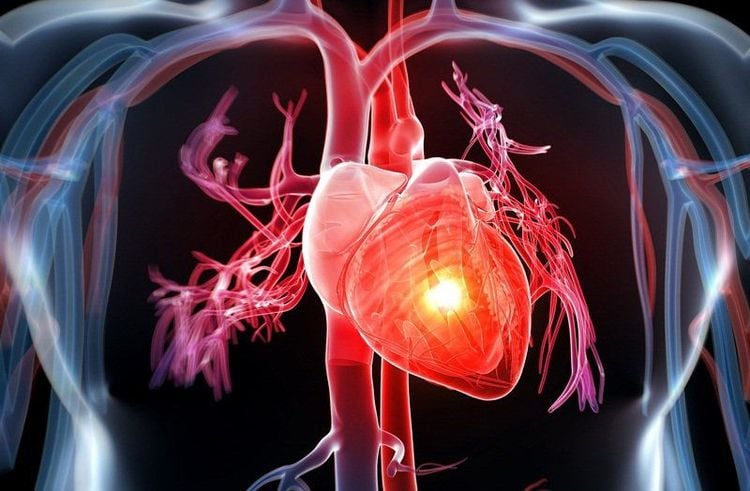This is an automatically translated article.
The article was professionally consulted by Dr. Ngo Dac Thanh Huy - Cardiologist - Department of Medical Examination & Internal Medicine - Vinmec Danang International General Hospital.Cardiac catheterization and contrast angiography are techniques to identify large blood vessels and heart defects, from which to appoint cardiovascular intervention or surgery to repair part or all of that malformation.
1. What are large duct catheters and contrast angiography?
Cardiac catheterization and contrast angiography under angiography is a technique to insert catheters into positions in the heart chambers and large blood vessels to measure pressure, SaTO2 of cardiac chamber locations, combined with cardiac chamber imaging and large blood vessels to identify large vessels and heart defects, from which to appoint cardiovascular intervention or surgery to repair part or all of those defects.
Anatomical images of the heart chamber, heart structure, coronary artery system will be taken under the bright fluorescent screen and stored in digital form.
2. Indications and contraindications for large-tube cardiac catheterization and contrast angiography

Indications for large-tube cardiac catheterization and contrast-enhanced cardiac chambers in the following cases:
Evaluation before and after heart transplant; Cardiomyopathy ; Constrictive pericarditis or cardiac tamponade; Heart valve disease; Heart attack ; Coronary artery disease. Suspected cardiac and extracardiac malformations. Congenital heart disease with indications for intervention to repair part or all by cardiovascular intervention. Congenital heart disease is complicated when echocardiography is not clear but cardiac catheterization is needed to find the lesion or calculate the necessary indicators before surgery. Contraindicated large-tube cardiac catheterization and contrast-enhanced cardiac catheterization in the following cases:
Acute gastrointestinal bleeding or acute anemia Coagulation disorders causing uncontrolled bleeding Electrolyte disturbances, especially hypokalemia; Uncontrolled arrhythmias Infection, fever, or pregnancy Recent history of cerebrovascular accident (< 1 month) Severe heart failure, renal failure Uncooperative patient Other serious medical or surgical disease without can catheterize large tubes.
3. Steps to perform large-tubular catheterization and contrast angiography

Step 1: Echocardiogram for the patient 2 times, then electrocardiogram, chest X-ray, blood test and fasting 4-6 hours before the procedure.
Step 2: Anesthesia according to the anesthetic procedure. A puncture of the femoral vein, femoral artery, if necessary, another puncture.
Step 3: Right heart catheterization: Insert the catheter and lead from the femoral vein into the right atrium, superior vena cava, from the right atrium through the tricuspid valve into the right ventricle, to the pulmonary artery. Then measure the pressure and SaTO2 of the heart chambers and great vessels. Contrast angiography of the right ventricle, pulmonary artery, superior vena cava and inferior vena cava.
Step 4: For left heart catheterization: Insert the catheter and lead from the femoral artery into the inferior aorta, ascending aorta, through the aortic valve into the left ventricle. Similar to right-chamber catheterization, pressure measurement and SaTO2 of cardiac chambers and great vessels can be measured twice. Contrast angiography of the left ventricle, ascending aorta, descending aorta, aortic arch, and other arterial branches.
Step 5: Withdraw the entire catheter, lead, and vascular catheter from the vein, femoral artery, and manually squeeze the femoral vein and femoral artery at the end of the procedure. After the bleeding stops, apply pressure with an elastic bandage.
4. Monitoring and handling of accidents
Follow up:
Echocardiography after the procedure Monitor femoral vein bleeding at the puncture site. Monitor thigh compression for bleeding and hematoma. Remove the compression bandage after 24 hours. Treatment of complications:
Cardiac arrhythmias: Use of arrhythmia drugs, electric shock... Hematoma at femoral vein puncture: compression bandages, hemostasis stitches... If infarction, thromboembolism needs specialist consultation to handle each type. Pericardial bleeding: Blood transfusion, pericardial aspiration, surgery when necessary. Venous bleeding due to laceration: Needs compression bandages, blood transfusion, surgery. Vinmec International General Hospital with a system of modern facilities, medical equipment and a team of experts and doctors with many years of experience in medical examination and treatment, patients can rest assured to visit. and hospital treatment.
Please dial HOTLINE for more information or register for an appointment HERE. Download MyVinmec app to make appointments faster and to manage your bookings easily.














